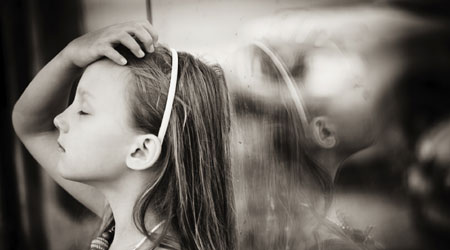Outside my window, in New York City, the Hudson River is calm. A surreal vision, belying the devastation of the past two weeks. Amid the wrath of Sandy, two brothers—a toddler and a four-year-old—were snatched from their mother’s arms by Staten Island’s swirling floodwaters. And on October 26, just two Thursdays before the children’s bodies were discovered, a Manhattan mother entered her apartment to find two of her progeny slain, in the bathroom, at the hands of their nanny.

The collision of routine and tragedy is wrenching, perverting the order of things beyond imagination. The mom from one of NYC’s hardest-hit boroughs was driving in the family’s SUV. The parent on a leafy block on the city’s Upper West Side discovered the unspeakable horror in her bathroom, site of a favorite evening ritual. Crises of this magnitude expose the huge holes in our fragile infrastructure, but that’s not all they reveal. They surface primal fears: our lack of control, and our inability to protect our children, not merely from the monsters under the bed, but from the damage of storms, both human and natural.
The tragedy before the hurricane hit unbearably close to home, as my neighborhood’s parents were preparing dinner and soothing their cranky children. One of the victims was a first-grader at P.S. 87, where my own kids, now grown, had been students, and where a close colleague’s two boys are now enrolled. The mother taught a class at the Museum of Natural History, and was active in an early childhood program at the “Hippo Park,” a playground, and the site of years of birthday celebrations for my son. I, too, employed a nanny, when I returned to work 13 weeks after my first child was born, from a maternity leave cobbled together with Temporary Disability Insurance and my own sweat equity. Winnie Palmer, who had migrated to Westchester, and our home on the Upper West Side, via the West Indies, was my partner in the complicated, demanding and emotionally fraught work of care.
The response to this tragedy in the media turned my stomach, the spin reeking of “it’s so hard to get good help,” exposing deep socio-economic and cultural divisions, and villainizing the family’s caregiver (dubbed “Killer Nanny” by the tabloid Daily News), who had, herself, attempted suicide, and whose life, from all accounts, had been badly unraveling, forcing her to seek psychological counseling. claimed the headline of one of the articles, duly noting that the nanny worked 12-hour days, and that she often remained in the apartment, isolated, and unconnected to a support network of any kind.
Earlier this fall, a mother in Westchester, involved in a fierce custody dispute, killed her four-year-old son, and then tried to commit suicide. Most of the sensationalistic coverage resembled that of the nanny case, but one self-described avid blogger, and high-tech geek, of all things, bothered to do a bit of investigating. He talks, if bluntly, of , as this unspeakable act is known, and outlines the five common motives, ending with a recommendation that access to psychiatric care needs to be improved, along with awareness of mental illness. A good start, certainly. Depression among mothers and caregivers is an , identified as a “common and devastating public health problem,” affecting an estimated one in ten children. And what about hooking nannies into the city’s ?
We want to keep our children out of the storm. Our protection, alas, has limits. The least we can do is engage in some serious soul-searching about the conditions in which we nurture, care for, and educate them. Care work—practiced by parents, ECE professionals, physicians, nurses, and many others—is embedded in the values of love, reciprocity, and obligation that sustain our families and communities, as Nancy Folbre writes, so eloquently, in . But we don’t value care work—at great risk. We need to develop the will as a society to ensure that we support the relationships that constitute the foundation of our future.



This is beautifully said, Susan. Thank you.
Arlie Hochschild’s “The Outsourced Self” also raises many questions about how we wrestle with the moral dimensions of “family” and “community” in a care and commons-based manner, while respecting the power and authenticity of personal ambition, the dictates of speed in a technology-driven culture and the confusions about time that affect us all.
As millions of people attempt to cope with the unwilled changes that have been
visited upon us by diverse tragedies, including violence, economic ruin and Sandy, it would be wonderful if we could work and think together toward a more collective vision of a caring society in which children and all who are needy, innocent, or lost in some way could be our first instead of occasional consideration. HB